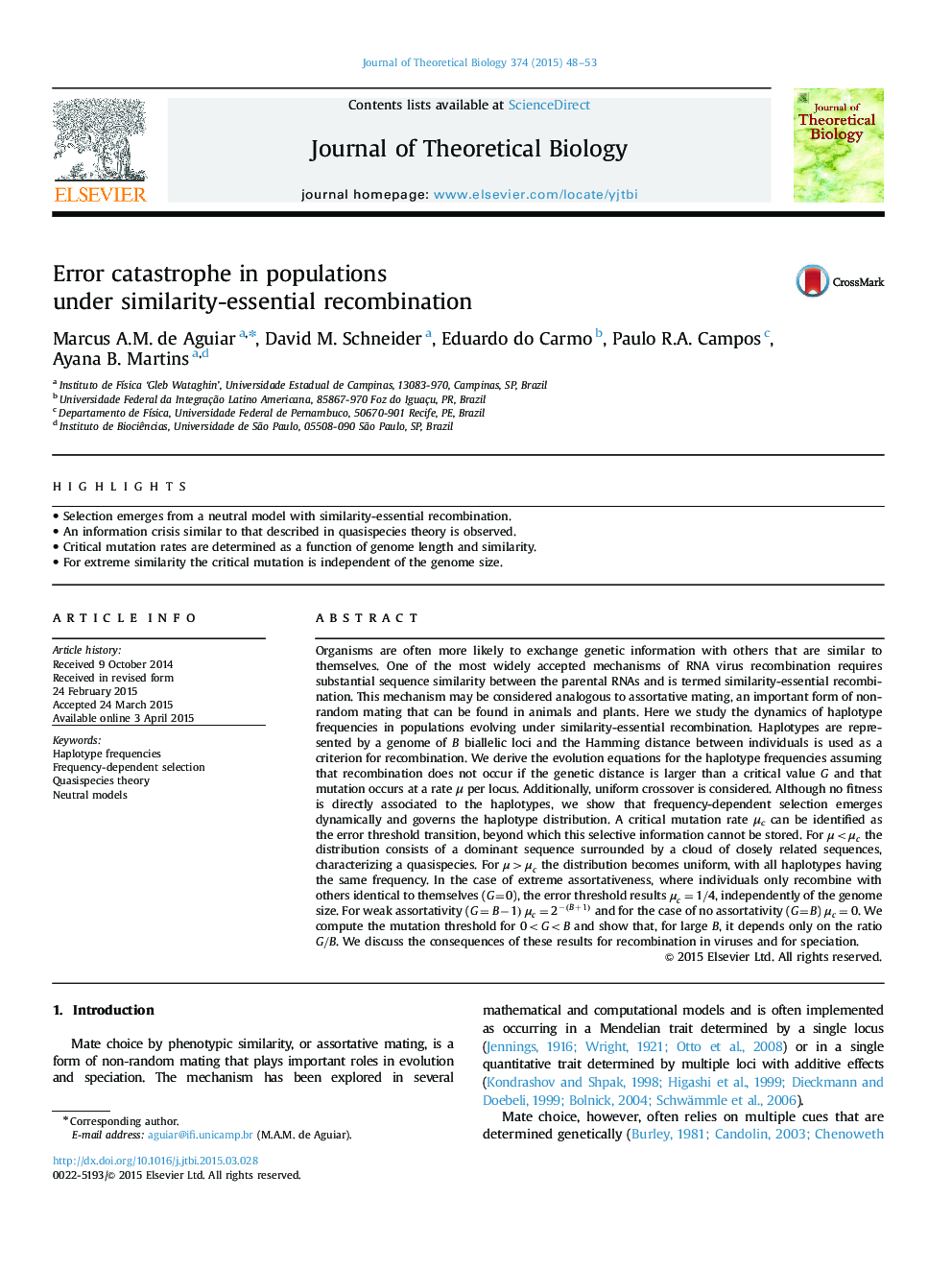| کد مقاله | کد نشریه | سال انتشار | مقاله انگلیسی | نسخه تمام متن |
|---|---|---|---|---|
| 6369855 | 1623836 | 2015 | 6 صفحه PDF | دانلود رایگان |
عنوان انگلیسی مقاله ISI
Error catastrophe in populations under similarity-essential recombination
ترجمه فارسی عنوان
اشکال فاجعه آمیز در جمعیت هایی که در زیر شباهت-نوترکیبی ضروری هستند
دانلود مقاله + سفارش ترجمه
دانلود مقاله ISI انگلیسی
رایگان برای ایرانیان
کلمات کلیدی
موضوعات مرتبط
علوم زیستی و بیوفناوری
علوم کشاورزی و بیولوژیک
علوم کشاورزی و بیولوژیک (عمومی)
چکیده انگلیسی
Organisms are often more likely to exchange genetic information with others that are similar to themselves. One of the most widely accepted mechanisms of RNA virus recombination requires substantial sequence similarity between the parental RNAs and is termed similarity-essential recombination. This mechanism may be considered analogous to assortative mating, an important form of non-random mating that can be found in animals and plants. Here we study the dynamics of haplotype frequencies in populations evolving under similarity-essential recombination. Haplotypes are represented by a genome of B biallelic loci and the Hamming distance between individuals is used as a criterion for recombination. We derive the evolution equations for the haplotype frequencies assuming that recombination does not occur if the genetic distance is larger than a critical value G and that mutation occurs at a rate μ per locus. Additionally, uniform crossover is considered. Although no fitness is directly associated to the haplotypes, we show that frequency-dependent selection emerges dynamically and governs the haplotype distribution. A critical mutation rate μc can be identified as the error threshold transition, beyond which this selective information cannot be stored. For μ<μc the distribution consists of a dominant sequence surrounded by a cloud of closely related sequences, characterizing a quasispecies. For μ>μc the distribution becomes uniform, with all haplotypes having the same frequency. In the case of extreme assortativeness, where individuals only recombine with others identical to themselves (G=0), the error threshold results μc=1/4, independently of the genome size. For weak assortativity (G=Bâ1) μc=2â(B+1) and for the case of no assortativity (G=B) μc=0. We compute the mutation threshold for 0
ناشر
Database: Elsevier - ScienceDirect (ساینس دایرکت)
Journal: Journal of Theoretical Biology - Volume 374, 7 June 2015, Pages 48-53
Journal: Journal of Theoretical Biology - Volume 374, 7 June 2015, Pages 48-53
نویسندگان
Marcus A.M. de Aguiar, David M. Schneider, Eduardo do Carmo, Paulo R.A. Campos, Ayana B. Martins,
